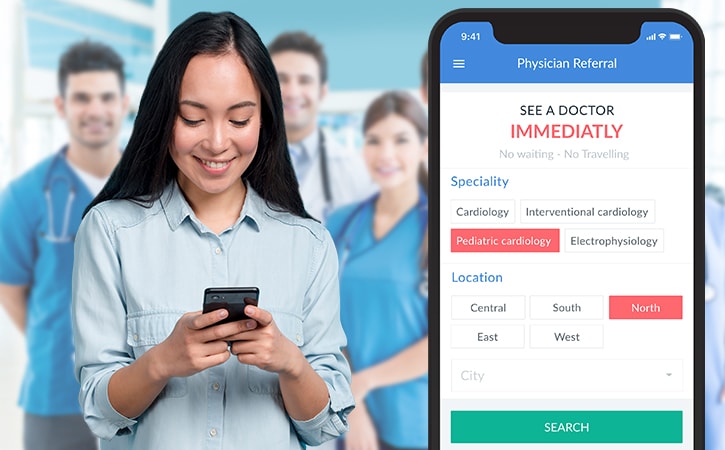From education to entertainment, we use technology in many aspects of our life. In recent years, technology has been transforming the medical industry in new and innovative ways. The influence of medical technology goes far beyond high-tech equipment in the operating room to everyday items that are widely used in our daily lives such as smartphones and wearable devices. Here are some ways that technology can help to improve patient outcomes.
Patient Engagement
Just the idea of visiting the doctor or a hospital can be frightening to many people. Add to this the hassle of scheduling appointments, waiting in line, and having to remember your medical history and you can understand why many people are reticent to seek medical care. Digital patient engagement tools allow patients to use their smart devices to perform a range of functions from scheduling appointments to accessing medical records and making payments. Using the best patient engagement software available removes a significant obstacle that can prevent people from getting medical treatment and encourages them to be proactive about their health and well-being. It can also lead to better communication between patients and providers.
Patient Education
The most straightforward and common method of providing access to information through technology is through websites and educational videos on YouTube or health provider portals. Aside from these, there are now also mobile health apps that offer a range of services from nutrition and exercise tips to mental health support. Patients can even use virtual reality (VR) technology to simulate and better understand complex medical procedures or treatments. By providing patients with access to accurate and engaging educational resources, technology can help patients to take an active role in their health and treatment. This can lead to better patient outcomes and improved quality of life.
Medication Management
Technology can reduce errors in medication management and improve patient adherence to medication regimens. For example, digital medication reminders can notify patients to take their medications on time and medication management apps can help patients keep track of their medication refill dates. Electronic prescriptions allow healthcare providers to send prescriptions directly to pharmacies, eliminating the risk of paper prescriptions getting lost or being fraudulently created. This also helps to reduce human errors such as illegible handwriting and ensures that patients can receive their medication promptly.
Personalized Treatment
Healthcare professionals can be constrained by their knowledge and experience when it comes to less common diseases and treatments. Technology can help by analyzing patient data and providing evidence-based recommendations to tailor treatment plans for patients based on their needs. For instance, electronic health records (EHRs) can provide doctors with easy access to comprehensive patient history, medication records, and test results, enabling them to make better-informed decisions. Similarly, genomic testing can identify a patient’s unique genetic characteristics and help providers to develop treatment plans that are more likely to be effective while avoiding treatments that may have adverse side effects.
Improved Diagnosis
Like genomic testing, other forms of technology can help healthcare providers to diagnose a patient’s ailment accurately and quickly. For instance, medical imaging technologies like X-rays, CT scans, and MRIs can enable doctors to detect illnesses and injuries that are incredibly difficult to discern. Similarly, computer-aided diagnosis (CAD) software can help physicians accurately identify cancer, heart disease, and other conditions through artificial intelligence (AI) visual analysis of medical images. While many of these technologies still require a human operator to validate their results, they are transforming the way healthcare is delivered by automating routine tasks and allowing providers to make more prompt diagnoses.
Additionally, software solutions, such as a cardiac PACS system, enable doctors to analyze cardiology and radiology images in a single workstation. They also include smart report-building and diagnostic tools to increase the speed and accuracy of the diagnosis and make patient care more efficient.
Remote Monitoring
One application of technology that ballooned during the pandemic was remote monitoring. This technology allows healthcare providers to communicate with their patients in real time through text messages or video calls. Remote healthcare apps can be used to provide timely health advice and thus improve overall health outcomes. Likewise, wearable devices can track the vitals of at-risk patients and alert healthcare providers if there are any concerning changes. These tools can help reduce hospital admissions and improve patient well-being while cutting down on operational costs and administrative paperwork at the same time. It also allows patients in remote or rural settings to gain access to high-quality healthcare.
Medical Training
The advancement of technology has provided medical students and residents with innovative training tools and resources. For example, virtual reality-based simulation and educational software allow students to learn hands-on skills such as intubation and mass spectrometry without ever having to perform the procedures in a live setting. Students can learn these skills in a safe environment and improve their proficiency before they need to perform them in real life. In addition, there are now online educational platforms that provide interactive lectures and seminars on a wide variety of healthcare topics, allowing medical professionals to improve their knowledge and skills without having to take time off work or travel.
The adoption of technology in the medical field has improved the efficiency and outcome of healthcare in many different ways. Patients benefit from technology by having access to accurate and engaging resources, empowering them to make informed decisions about their health. Medical professionals benefit by enhancing their training, hence improving the quality of care that they can provide. Overall, accessibility to healthcare is increased and the cost of said healthcare is reduced. This is how technology is helping to improve patient outcomes.
Follow Technoroll for more!





